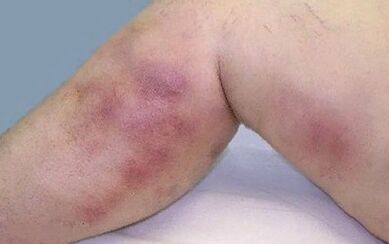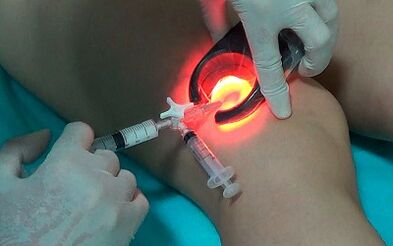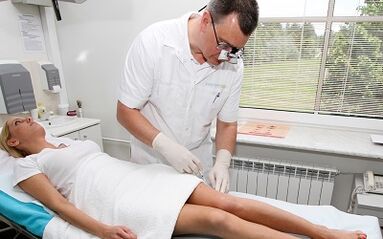Varicocele is a fairly common disease, especially in women who work in the lower limb veins.This is due to the fact that venous valves suffer – these are shutters that regulate the reverse outflow of blood.Generally, the valve should be closed and the valve should be opened according to the flow of blood.
Due to varicose veins, they are almost in close proximity, and blood stagnation occurs in the blood vessels of the lower limbs.Naturally, a large amount of blood accumulated in the veins can cause its walls to stretch, reduce elasticity, and sometimes even damage.Therefore, as the process develops, characteristic manifestations appear on the skin.
At first, these were just blood vessel nets, stars, and then blue and crimson yarns appeared, legs swelled, skin began to peel, and continued pain in the lower limbs were worried.Therefore, it is important to identify the disease in the initial stage and start treatment in time.
Causes of disease development
Under the influence of many factors, it can develop from the influence of many external factors.Of course, it all depends on one's lifestyle.However, there are many induced risk factors that increase the likelihood of varicose veins.
These factors are hereditary tendencies, impaired hormonal balance, neurological disorders, inactive lifestyles, body overload, flat feet, and wearing high heels.
Genetic tendency.Unfortunately, if a close relative has this disease, it may be passed on to you, so it is usually caused by genetic weakness in connective tissue or defects in the venous valve.In this case, it is necessary to remember to prevent varicose veins.
Hormonal imbalance.Constant fluctuations in hormone levels are most inherent in women, so they are more susceptible to varicose veins according to statistics.Similar fluctuations were observed throughout the menstrual cycle, during pregnancy and menopause.The use of hormone medications (such as birth control pills) can also affect.Estrogen significantly affects the elasticity of blood vessel walls.
Neurological disorders, frequent stress, depression.It is known that it is the nervous system that regulates venous tones.Therefore, any pathology associated with it will affect the venous state.
The inflammation process in the pelvis.They often disturb women's floors.Due to them, hormone levels can be severely disturbed.
A sedentary lifestyle.For example, blood flows out due to long-term sitting on a computer, the veins in the legs are squeezed out.Due to the stagnation of blood, the walls of blood vessels stretch and become thin.Even "computer varicose veins" have been distinguished so far and are often found.
Physical overload.Excessive physical exercise will not affect any benefits on the boat either.Heavy weightlifting, continuous walking increases the load on the feet and therefore increases in the veins.
Flat feet.One way or another, this is deformation of the foot, which also has a certain impact on the blood vessels in the lower limbs.
constitution.Open people, especially with high growth, are prone to varicose veins in the future.
Wearing high heels is dangerous for women because the burden on the lower limbs increases greatly when walking high heels that are not particularly comfortable.
Clinical manifestations of varicose veins
Symptoms of the disease gradually appear, but they develop steadily, especially without proper treatment.It all starts with the appearance of small blood vessels on the legs and stars, the so-called Telangiectasias.They do not cause too much discomfort, but with these manifestations already, it is necessary to seek consultation from a doctor.
In the future, the swelling of the legs that occurs after a long walk will start to bother at night in most cases.By morning, they passed by themselves.This is the first signal that the deep vein function that returns blood to the heart is impaired.
Over time, patients begin to complain about leg twitching and numbness, especially at night and in the morning.If treatment is not started at these stages, then venous nodules will appear on the skin, the veins will be visible, blue, and even closer to the dark red color, which will be painful at palpation.The skin on the lower limbs will begin to gradually change.It will become thick, dry, and will start to peel off and darken.Severe muscles will be disturbed while walking.
Severe itching can be felt where the venous nodes look.Involuntary contraction of the calf muscles may occur at night.
Diagnosis and complications of venous veins

Diagnosis of the disease is necessary.But it all depends on the patient going to the hospital.
In the diagnosis, they are based on complaints, external manifestations of the legs, the patient's lifestyle, his bad habits, physical constitution, the presence of varicose veins among parents, brothers, and sisters.
In order to confirm the diagnosis, other instrument inspection methods were opened.
Such a method is:
- Ultrasound examination of veins (ultrasound) - also known as polyploid surgery for lower limb veins.It allows you to evaluate the structure of veins, their off-road capabilities, the speed and direction of blood flow, the presence of thrombosis, the expansion of blood vessels, the presence of any tumor.
- Contrast varicose veins or venography - It is performed by introducing the contrast into a container.Its distribution shows the patency of the veins, the condition of the walls, the presence of volume formations in the vascular gap.
Ultrasound is considered preferable because it is a non-invasive research method.
Without proper treatment, varicose veins can become multiple complications.
These include:
- Thrombotic veins - Inflammation of swelling and deformed veins;
- bleeding caused by rupture of blood vessel walls;
- The rheological properties of the blood change, leading to the formation of blood clots, which in turn lead to pulmonary artery thromboembolic, myocardial infarction and stroke.
- Excessive skin pigmentation.
Nutritional ulcers - They may appear from the slightest wound or damage to the skin due to the continuous damage to the blood flow.As a result, ulcers fail to heal for a long time, they can cause serious harm and smell unpleasant.
All of this significantly worsens the quality of life of patients and can even disable them.
Basic methods for treating varicose veins

Unfortunately, varicose veins are a chronic disease and there is no complete cure for it.But medical discoveries at least funds can prevent the disease from progressing.
Treatment depends directly on the stage of the varicose veins.If these are only initial manifestations, you can do it without surgical intervention, i.e. only a conservative approach.
Drugs - This includes drug tension (intravenous toxin), anti-breakthrough drugs that prevent blood clots, non-replacement anti-inflammatory drugs (pain-relieving drugs), vascular protective agents, and various creams, plasters and gels for the skin of the legs.
Compression Methods - They provide the use of compression socks, applying seasoning from elastic bandages to maintain the tone.
Pneumatic massage is a special massage using a pneumatic massager.This is very effective because it improves blood circulation, tissues nutrition and enhances vascular tone.
Sclerotherapy is already an extreme approach.It has no operation.For sclerosis, i.e. subsidizing blood vessels, injecting a special substance into it, thus preventing the blood flow in the blood vessels, which will result in atrophy over time, failing to function and disappear.However, several sclerosis therapy may be required to achieve the desired effect.
Intravascular laser coagulation is already an invasive treatment.Meanwhile, with the help of lasers, the surgeon condensed the damaged veins under local anesthesia.
Water ech is an outdated method, but it still works.He belongs to folk medicine.When applying water ches, bite the skin and release it into blood called Girudin while sucking.It dilutes blood and does not allow blood clots.
Diet - In the diet of patients with varicose veins, there should be a lot of vegetables and fruits, any form, seafood, beans, nuts, low-fat meats and dairy products.
In non-traditional treatments, apple cider vinegar, soap and potatoes, soda and bathroom compression, and ginseng use.
Basic knowledge about preventing varicose veins

Many people wonder if it is possible to cure varicose veins in the end?The answer is no.However, certain preventive measures can be observed to prevent the occurrence of the disease.
In particular, it is an active lifestyle that gets rid of the extra weight, constantly used in the gymnastics of the lower limbs, using compressed flax.
If the disease has already occurred, hormone contraceptives must be avoided (they contain female hormones that may aggravate the progression of the disease).
Also, avoid:
- Any shoe on high heels will increase the load on the feet.
- Increase weight, and even increase obesity.
- Fat, sharp, fried, smoked and salty diets are present.
- Heavy weightlifting.
- Lying in a hot bath for a long time.
- Visit the bath and sauna.
- Abuse of alcohol and smoking.
- Do not consult a doctor's self-treatment course.
Additionally, those who have to sit or stand for a long time should consider:
- On legs that are stuck for a long time, climb onto the socks and drop the heels, move to the feet and move your fingers vigorously to disperse the accumulated blood without any harm.
- With long hours of working in front of the computer office, you can regularly place your legs on the table so that blood flows better from the legs.
- You can buy a special tool stand, and doing any gymnastics on it will be very convenient;
- Regularly lifting and lowering your fingers, this tone of the calf muscles and activates blood in your veins is very useful.
Make sure to get up every hour, walk around for a few minutes, and then pay a small amount.

















